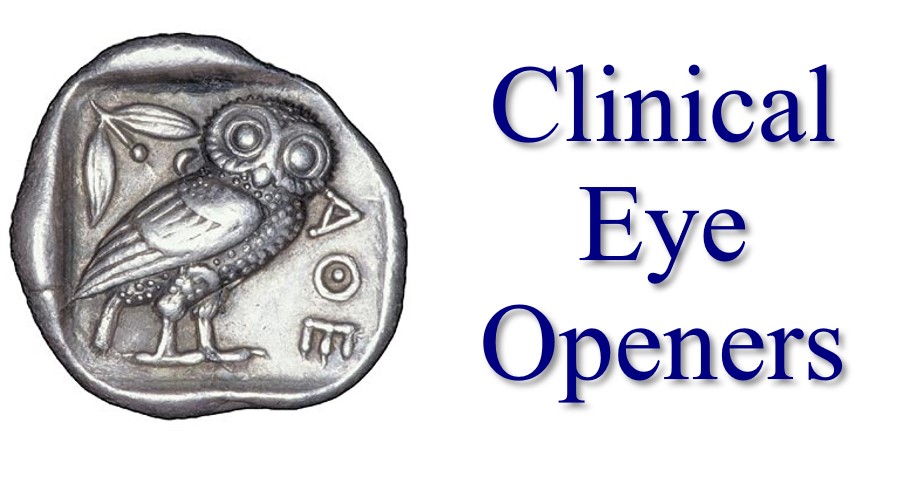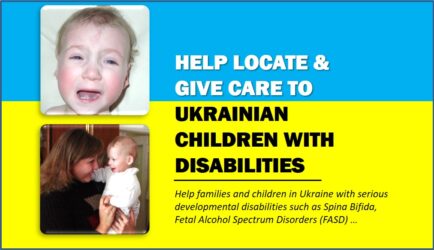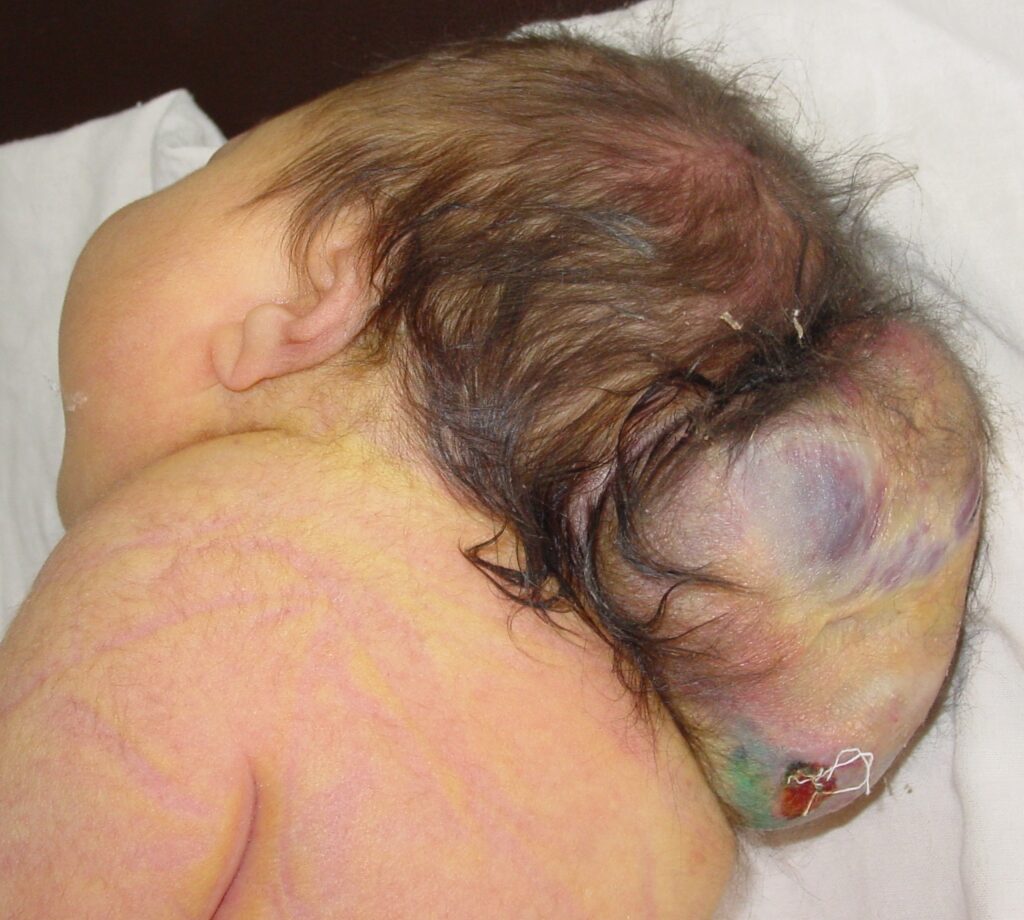Iniencephaly 1
Iniencephaly can be associated with cyclopia and spinal myelomeningocele (an interesting illustration by Josef Warkany is found in “Congenital Malformations”, p. 204, fig. 23-2). In the same book (p. 235) are shown illustrations from the 17th century indicative of the dramatic social impact of iniencephaly. “Inion” points towards the brain and neck. The second signal is marked retroflexion of the head and low positioning of the ears. The video and images of this patient are classic. Iniencephaly is rare but occasionally there are reports of clusters. There is prevalence of females (reported by some as 90%), even more so than among instances of anencephaly. Twinning (mono- or dizygotic) have been repeatedly observed. Family histories documented siblings of patients with spina bifida as well as with cyclopia. Concurrence of iniencephaly, occipital encephalocele, spina bifida, anterior body wall defects have been noted. Generally, the head is large and the body is shortened (as in this patient). The scalp hair is abandoned over the neck and is lacking in the parietal area. The anomalies of the occiput are virtually constant and the foramen magnum is generally enlarged and allowing parts of the brain and cerebellum to become in contact with the cervical spine which is always shortened and deformed. The cervical vertebra are in block which is a feature of the Klippel-Feil syndrome – iniencephaly is incompatible with life and Klippel-Feil syndrome is compatible with life. In some instances the heart is found under the chin. Please note the nearly constant anomalies of the occipital bone and cervical vertebrae – strictly speaking, the occiput is a cervical vertebra. Another feature deserving attention is the shortening and obesity of the bodies of this category of patients. Experimental Teratology has shown that drugs vinblastine (velban used for cancer treatment), tetracycline antihistamine, clomiphene, and sulfonamides have produced iniencephaly. The empiric recurrence risks of mothers who produced one instance is between 1-5%. Regarding pathogenesis, several experts suggest an alteration of mesoderm formation. The inclusion of iniencephaly in the neural tube defects (NTD) category implies the relationship with anencephaly and spina bifida. Regarding Klippel-Feil syndrome, experts consider that it is the result of failure of segmentations of cervical vertebra. In general, iniencephaly represents 1% of NTD. In Rivne Polissia, iniencephaly represents 3% of NTDs.







